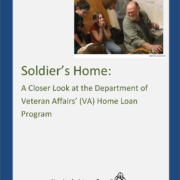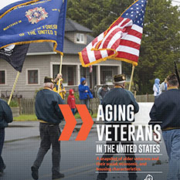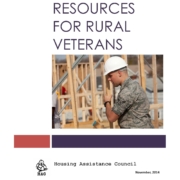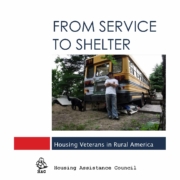Soldier’s Home: A Closer Look at the Department of Veteran Affairs’ (VA) Home Loan Program
This report provides a descriptive analysis of the VA home loan program between 2005 and 2014. The analysis provides an overview of the VA loan program, its trends, borrowers, and lenders. The findings highlight the growing role of VA loans in home finance markets since the beginning of the Great Recession. VA loans represented approximately 9 percent of all mortgage lending activity in 2014, up from less than 2 percent in 2005. The lenders originated at least one VA loan in 95 percent of all counties during the 2012 to 2014 period.
During this time, refinance loans came to represent a majority of VA lending for three straight years (2012-2014) because of historically low interest rates. VA origination rates are consistently high for minority home purchase loans, when compared to conventional home purchase loans, even as default rates are said to be low, which may, at least in part, reflect the programs’ approach. Private mortgage companies and large volume lenders play a big role in the market, with program lender requirements possibly limiting small lender involvement. As long as the program can adapt to future changes, such as a smaller and more diverse veteran population and an increased importance of internet access, the VA loan products will continue to be a source of high quality, affordable housing finance for many veterans and their families.



 Housing Assistance Council
Housing Assistance Council Housing Assistance Council
Housing Assistance Council